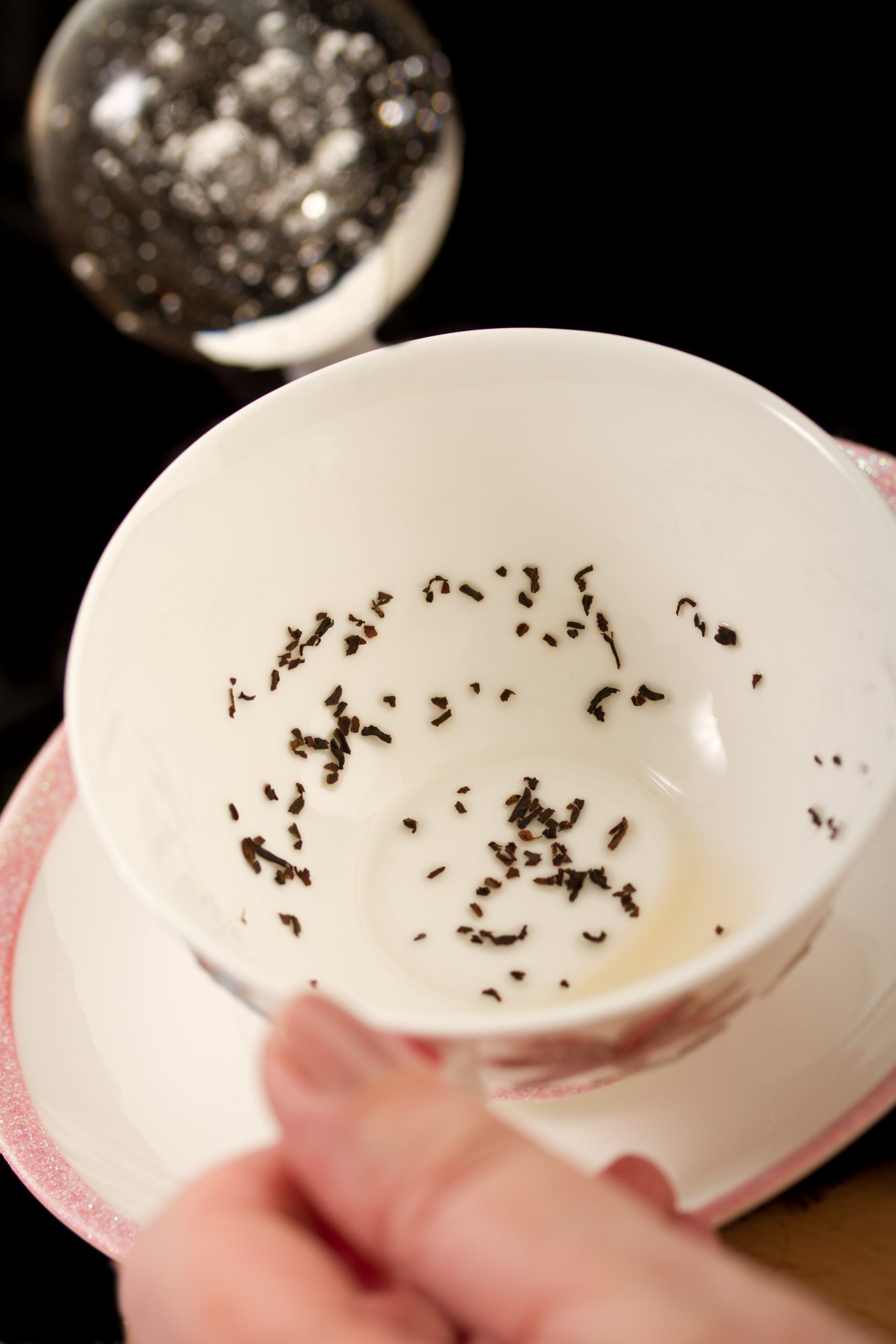 Yesterday, the Supreme Court heard oral arguments in the most closely-watched patent case of the term, United States / Smith & Nephew v. Arthrex. IPWatchdog reached out to some of the amici in the case, as well as patent practitioners and other stakeholders, to get their take on how the hearing went and what the future holds for the Administrative Patent Judges (APJs) of the U.S. Patent and Trademark Office’s Patent Trial and Appeal Board (PTAB). Most agreed that it’s unlikely the Court will dismantle the PTAB altogether, but that they were clearly uncomfortable with the present structure. Below, our experts weigh in on some potential outcomes.
Yesterday, the Supreme Court heard oral arguments in the most closely-watched patent case of the term, United States / Smith & Nephew v. Arthrex. IPWatchdog reached out to some of the amici in the case, as well as patent practitioners and other stakeholders, to get their take on how the hearing went and what the future holds for the Administrative Patent Judges (APJs) of the U.S. Patent and Trademark Office’s Patent Trial and Appeal Board (PTAB). Most agreed that it’s unlikely the Court will dismantle the PTAB altogether, but that they were clearly uncomfortable with the present structure. Below, our experts weigh in on some potential outcomes.
The Amici
 Peter J. Brann, Brann & Isaacson
Peter J. Brann, Brann & Isaacson
“Based on the substance and tenor of the questions, I believe that the administrative state will narrowly live to fight another day.”
Brann & Isaacson submitted an amicus brief on behalf of two of the leading American golf manufacturers, Acushnet and Cleveland Golf, supporting the United States on the constitutionality of the PTAB.
 Jeremy C. Doerre, Tillman Wright, PLLC
Jeremy C. Doerre, Tillman Wright, PLLC
“Reading tea leaves is always problematic, but if pressed to guess, I would guess that a majority of the Court will ultimately agree with the Federal Circuit that administrative patent judges are principal officers. It seems tough to escape this conclusion without backing away from the emphasis on reviewability in Edmond, but the Court obviously has the power to do exactly that if it wishes. Some members of the Court seemed to suggest that they would like to do so, perhaps instead focusing a bit more on policymaking ability.
However, if the argument foreshadowed anything, it is probably that Arthrex is exceedingly unlikely to get the result it was hoping for. Even if a majority of the Court decides that administrative patent judges are inferior officers, there seemed to understandably be a good bit of skepticism towards any suggestion that this would require taking down the entire system.
Some members of the Court instead seemed to lean towards stripping out from 35 U.S.C. § 6(c) the requirement for three member panels and/or the prohibition on non-board rehearing. The obvious other option would be to require appointment by the President and advice and consent.
Ultimately, the best possible outcome is probably for Congress to get involved and obviate the need for the Court to try to craft a remedy at all, but that seems unlikely to happen.”
Doerre submitted an amicus brief in support of the petitioner.
 David Hoyle, B.E. Technology LLC
David Hoyle, B.E. Technology LLC
“The questions and comments of the Justices exposed their opinions in more detail in Arthrex than what is typical. It seems as though the Justices have their minds made up and were more involved in convincing the other Justices to join their side. Having said that, my Crystal Ball says Justices Roberts, Thomas, Gorsuch, Kavanagh, and Barrett will rule in favor of Arthrex. This leaves Justices Breyer, Kagan and Sotomayor ruling against Arthrex.
The greatest question will be, what is the remedy? My perceived majority asked many questions on what the solution should be. Their discussions were about surgical remedies as opposed to major remedies pending Congressional action. That means everything is still in play; is the remedy surgical? Or do they throw the whole thing out?
I do believe Arthrex and the Justices, by their questions, have shown what many of us has said all along—the soft underbelly of the PTAB and America Invents Act is a due process violation.
Hoyle submitted an amicus brief for B.E. Technology in support of Arthrex and reversal.
 Charley Macedo, Amster, Rothstein & Ebenstein
Charley Macedo, Amster, Rothstein & Ebenstein
“Today’s oral argument demonstrated that the Court was equally concerned with the unusual structure of the IPR system, which broke from tradition, as with the suggestion to strike down the entire system. I wouldn’t be surprised to see a 5-4 split finding Patent Trial and Appeal Board Administrative Patent Judges are inferior officers. However, it seems that if the Court finds that APJs are principal officers, that there will be a different ‘blue-penciling’ of the statute (35 U.S.C. § 6) than that adopted by the Federal Circuit, to allow for appropriate political appointee review.”
Amster, Rothstein & Ebenstein filed an amicus brief on behalf of eComp Consultants in support of the petitioner.
 Josh Malone, Inventor of Bunch O Balloons and Volunteer with US Inventor
Josh Malone, Inventor of Bunch O Balloons and Volunteer with US Inventor
“The most likely outcome is 5-4 that the USPTO is a ‘strange bird’ agency whose employees can make final agency decisions without being Senate confirmed. The majority views patents as regulatory matters – public franchises – like toll bridges or veterans’ benefits, and will attempt to sidestep their precedent on property rights and administrative adjudications. I count Roberts, Gorsuch, Kavanaugh, and Barrett in the minority.
Alternatively, Alito or Sotomayor could swing to our side to hold that APJs are not inferior officers. At that point there is no majority on the remedy. I was surprised that Kavanaugh and Barrett were hesitant to “take down the whole system” if it is unlawful. Their pragmatism could trigger a second ballot with Kavanaugh joined by Barrett, Thomas, Sotomayor, and Kagan on the remedy. This would be a travesty for inventors and the United States justice system.
For inventors to prevail, Alito or Sotomayor must swing to our side with Kavanaugh and Barrett resisting the temptation to judicial activism.”
Malone filed an amicus brief in support of Arthrex.
 Jared McClain, New Civil Liberties Alliance
Jared McClain, New Civil Liberties Alliance
“The Chief Justice’s questions today highlighted a major concern with the positions of Smith & Nephew and the Solicitor General in this case: to allow the Director, in the name of supervision and control, to opaquely affect the outcome of individual patent determinations because he lacks plenary review power would not only undermine the transparency in government that the Appointments Clause exists to promote—doing so would also undermine the due process of law. The Court must craft a decision that accounts for structural integrity and transparency required by the Appointments Clause without depriving litigants of their due-process rights during agency adjudications.”
The New Civil Liberties Alliance filed an amicus brief urging reversal-in-part and supporting respondents.
 Ilya Shapiro, Director, Robert A. Levy Center for Constitutional Studies and Publisher, Cato Supreme Court Review, Cato Institute
Ilya Shapiro, Director, Robert A. Levy Center for Constitutional Studies and Publisher, Cato Supreme Court Review, Cato Institute
“The justices were clearly uncomfortable with the power given to officials not subject to presidential vetting and Senate confirmation, but were also unprepared to throw out the entire structure of administrative patent review. That question of remedy is key—and the Court should leave it to Congress to figure out rather than judicially crafting a new statute.”
Shapiro filed an amicus brief on behalf of the Cato Institute supporting the respondents.

 Bridget Smith and Kenneth Weatherwax, Lowenstein & Weatherwax LLP
Bridget Smith and Kenneth Weatherwax, Lowenstein & Weatherwax LLP
“We count three votes for reversing the ‘principal officer’ finding, and there may well be more given the surprisingly small number of questions about what remedy is appropriate if that finding is affirmed. We count no votes for the patent owner’s proposed ‘dismiss without severing’ remedy. There was a surprising amount of discussion of the possibility of construing section 318(b) to, as far as we could tell, give the Director discretion to not cancel claims found unpatentable by the Board—which we think would be an adventurous, to say the least, interpretation of this provision’s ‘shall issue and publish’ language. Beyond that, we think the tea leaves were not easy to quickly read.”
Smith and Weatherwax filed an amicus brief on behalf of Amici 39 Aggrieved Inventors in support of Arthrex.
Jonathan Stroud , Unified Patents
, Unified Patents
“The Court seems predisposed to finding that the statute as written and implemented means that the APJs are Principal Officers under the Appointments Clause and thus need to be answerable to the President; on the other hand, a majority of the Justices seemed unlikely to throw out the entire PTAB scheme. The most interesting comments came from Justices Kavanaugh and Barrett, both of whom are a bit of a question mark on patent and (to a much lesser extent) administrative law issues. Their comments suggested that they both might be predisposed (along with what seemed like a clear majority of the Justices) to find the statute flawed. But their comments were equally illuminating on the subsidiary question of whether they could issue some form of Constitutional fix. Justices Alito, Kavanaugh, and Barrett, from their comments, seemed predisposed to saying that the Constitutional defect was limited to section 6(c), and seemed to contemplate a limited severance (or, in the case of Justice Alito, just a Constitutional recognition that the director has authority to review final decisions). That may end up being as simple as changing the understanding of “shall” to a permissive “may” in the language of 6(c), which would preserve the system; it’s unclear what effect that will have on the thousands of pending cases, if any. Justices Thomas and Alito had interesting questions about remedy—wondering if this wasn’t just an advisory opinion and asking what the patent owner hoped to achieve here—and Chief Justice Roberts was measured and thoughtful, as always.”
Unified Patents filed an amicus brief supporting no party and reversal.
Patent Practitioners
 Case Collard, Dorsey & Whitney
Case Collard, Dorsey & Whitney
“During oral argument, some Justices seemed interested in potentially reigning in the executive department by requiring a more reliable, bright-line test for when an officer is principal v. inferior. However, the Justices recognized that the varied function of the executive branch could benefit from a ‘totality of the circumstances’ approach. The Justices were concerned about the variety of ‘severability’ remedies available to court to correct the problem. Arthrex argued that any correction must be left to Congress and was not the proper role of the Court. Any discussion of the remedy is positive for Arthrex, because implementing a remedy would require a finding that the PTAB Judges are inferior. Guessing an outcome based on oral argument is a tricky, but this appears to be a very close question after today’s argument.”
William Milliken , Sterne Kessler, Goldstein & Fox
, Sterne Kessler, Goldstein & Fox
“One of the primary issues the Justices appeared to be grappling with is how to articulate a legal test to distinguish between principal and inferior officers that (i) is concrete enough to be administrable but also (ii) is flexible enough to account for the wide variety of institutional structures that may be desirable in our government. Arthrex’s test—an adjudicative officer is a principal officer if no one else in the executive branch can directly review his or her decisions—is concrete, but less flexible. The test proposed by the United States and Smith & Nephew—an officer is an inferior officer if, considering the totality of the circumstances, the officer’s work is supervised ‘at some level’ by other officers—is flexible, but less concrete. Many of this morning’s questions illuminated the tradeoffs inherent in those two approaches.”
Naveen Modi , Paul Hastings
, Paul Hastings
“The PTAB continues to be under the Supreme Court’s scrutiny. The Court heard another historic argument today. Specifically, the argument today in Arthrex may have substantial consequences for the PTAB, the parties before it, and hundreds of proceedings pending before the PTAB (and perhaps even other tribunals). It is unclear where the Supreme Court will end up, but the Court asked tough questions to counsel for all three parties. The Court was trying to figure out where to draw the line on the question of whether for purposes of the Appointments Clause, the APJs are principal officers or inferior officers, and on the question of the appropriate remedy if it finds there is an Appointment Clause violation.”
Bradley J. Olson , Barnes & Thornburg
, Barnes & Thornburg
“In this long-awaited appeal, the line of argument advancing that APJs are a form of ‘inferior officer’ under the Appointments Clause is likely to win the day. This was clearly apparent when U.S. Deputy Solicitor General Malcolm Stewart delivered convincing arguments to the initial inquiries of Chief Justice Roberts regarding APJs as inferior officers. The main point of the Deputy Solicitor General was that APJs, while not under the plenary control of the Director, are still subject to ‘substantial’ supervisory control, emphasizing the point that the Board’s decision would be the decision of the Executive Branch unless reheard. Justice Thomas, who often does not pose questions during oral arguments, was compelled to ask the Deputy Solicitor General, ‘How would we discern what is substantial?’ Justice Thomas, and the other Justices, seemed satisfied with the response given and no further questions on that point ensued. My impression after listening to the oral arguments is that while the Court may not be in agreement with the PTAB’s enablement and operation, there have been sufficient corrections by Congress over the years to permit APJs to meet the definition of ‘inferior officers.’ In all likelihood, the Court will find some way of disagreeing with the Federal Circuit’s line of reasoning but will avoid a wholesale reformation of the PTAB.”
George E. Quillin , Foley & Lardner LLP
, Foley & Lardner LLP
“A decision with the least immediate impact would be one in which the Court agrees with the government and Smith & Nephew that Administrative Patent Judges (APJ) have been inferior officers all along. Hence, there would be no need to for a judicial fix to anything, and the APJs and the PTAB would continue to operate just as contemplated in the American Invents Act. Yet such a decision could have very significant long-term implications on for the country beyond patent law. As Justice Kavanaugh explained during oral argument, ‘What I’m worried about is this gives a model for Congress to eliminate agency review of ALJ decisions . . . that would allow Congress to give extraordinary power to inferior officers, which is not how our government is ordinarily structured.’”
Image Source: Deposit Photos
Photography ID:10522953
Copyright:ellenamani

![[IPWatchdog Logo]](https://ipwatchdog.com/wp-content/themes/IPWatchdog%20-%202023/assets/images/temp/logo-small@2x.png)

![[[Advertisement]]](https://ipwatchdog.com/wp-content/uploads/2024/04/Patent-Litigation-2024-banner-938x313-1.jpeg)
![[Advertisement]](https://ipwatchdog.com/wp-content/uploads/2024/04/Artificial-Intelligence-2024-REPLAY-sidebar-700x500-corrected.jpg)
![[Advertisement]](https://ipwatchdog.com/wp-content/uploads/2024/04/UnitedLex-May-2-2024-sidebar-700x500-1.jpg)
![[Advertisement]](https://ipwatchdog.com/wp-content/uploads/2024/04/Patent-Litigation-Masters-2024-sidebar-700x500-1.jpg)

![[Advertisement]](https://ipwatchdog.com/wp-content/uploads/2021/12/WEBINAR-336-x-280-px.png)
![[Advertisement]](https://ipwatchdog.com/wp-content/uploads/2021/12/2021-Patent-Practice-on-Demand-recorded-Feb-2021-336-x-280.jpg)
![[Advertisement]](https://ipwatchdog.com/wp-content/uploads/2021/12/Ad-4-The-Invent-Patent-System™.png)






Join the Discussion
11 comments so far.
Anon
March 7, 2021 07:42 pmipguy,
Sadly, the opposite of MANY anti-patent groups (notably several key elements of the judicial branch).
As I noted, in law – especially in law – this is extremely dangerous.
ipguy
March 7, 2021 01:20 pm@9
“The Ends do not Justify the Means.”
The opposite of the USPTO’s mantra.
Anon
March 5, 2021 02:25 pmipguy,
Not to stray (too far) from your point, but your last line of “Same result. Different mechanism.” immediately brings to mind my mantra of The Ends do not Justify the Means.
The fact that a different mechanism would be involved is critical.
One would need to make sure that THAT different mechanism was still properly being used (you hint at that with the MPEP 2239 nod, although, “exigent” may not be as liberally applied as you might think).
The problem in law – especially</i in law – is when the shortcut of a Desired Ends eclipses the Means.
ipguy
March 5, 2021 12:57 pmA thought just occurred to me.
Even if the SCOTUS finds that the PTAB APJs don’t have proper constitutional authority to invalidate patents (in the context of post-grant proceedings), what stops the Director from then simply ordering all patents that had been “improperly” invalidated by the PTAB in post-grant proceedings into Director-initiated ex parte reexamination (assuming the SCOTUS retroactively re-validates all patents that had been invalidated)? It is supposed to be a rare procedure, but that does not mean that it could not be done en masse under exigent circumstances. See MPEP 2239.
The CRU Examiners would simply follow the roadmap provided by the APJs decisions invalidating the patents in order to reject the patents’ claims, and the APJs will then uphold those rejections on appeal.
On the plus side, more work for patent prosecutors.
Same result. Different mechanism.
Night Writer
March 5, 2021 04:04 am@2 J. Doerre
Yeah but it ex parte is different for a two major reasons. 1) you can always go back into prosecution where the director has the direct control over the examiners. 2) you can bail to district court.
Pro Say
March 4, 2021 09:11 pmThe problems with tea leaves is that they leave a sticky mess.
You know; like what SCOTUS has done with patent law.
ipguy
March 4, 2021 07:58 pm@2
Thank you for that feedback.
Anon
March 4, 2021 07:44 amI would be curious about the percentage of those that files Amicus Briefs as to whether or not their “predictions” align or do not align with their own desired Ends.
For those that do not align (no matter which Ends is in fact desired), I would then be interested in a discussion by those same Amici as to the Means that they believe will be engaged in by the Court to reach an Ends that the Amici does not want to be reached.
Most anybody can have an opinion, can have a desired Ends, and can even make predictions.
I am more interested in an informed opinion that focuses on the Means to (whatever) Ends happens to be reached.
Night Writer
March 4, 2021 04:12 amMy prediction is 5-4 that the AIA is unconstitutional because the patent judges are not inferior officers. Note that I predicted that cert would be granted on this. And my predictions have almost always been correct.
The remedy is going to be to give the director plenary review. They will pencil it in and say that Congress did it for the Trade Mark judges. They may strike out the review language and say that Constitutionally that the director has plenary review even if it is not in the statute. That way they would not have to use their blue pencil for anything other than striking text.
Breyer/Kagen–I think it is vile that justices would even contemplate that citizens should be subjected to the tyranny of petty judges with little recourse. Just think of the dystopia these two would put us in. Large government that determines what you get and don’t get and petty judges making those decisions where you have no recourse other than accept their judgments.
(note that you can be for many liberal democratic policies but still want people to have freedom and rights).
I think the scheme that Breyer/Kagen want of an administrative state that rules our lives is in direct contradiction to the Constitution and the Bill of Rights. They are totalitarian communists. I know that sounds strong but if you look at the end game they are playing we would all end up in a system where the lower 90 percent of us would become slaves to an administrative state. Let’s hope that the USA lives through the tenure of these vile people. Sotomayor is probably in this with them.
The reason that we have such turbulence in this country is that there truly are nation changing things that are happening. Having an administrative state with such power over the individual is in direct contradiction to everything the Constitution and Bill of Rights stands for.
And really try to understand that there is a difference between providing services like health care and social security and removing people’s rights of redress. I am fine with social programs but that doesn’t mean I am fine with my rights as an individual being removed as part of it. Breyer/Kagen are into a power game of trying to create a totalitarian state.
J. Doerre
March 3, 2021 09:12 pmipguy –
See Oral Arg. Transcript at 26 (“Arthrex appears to concede that there’s no constitutional problem with the PTAB adjudicating direct appeals from denial of patent applications. Arthrex acknowledges there’s sufficient director control in that area that there’s not a constitutional problem.”); see also Arthrex Reply Br. at 18 (“Because the Director has plenary control over patent examinations, Congress need not alter the Board’s role in appeals from those proceedings.”).
This approach is notable given that the Supreme Court previously indicated in the context of ex parte appeals with respect to the previous head of the Office that “[a]s a member of the Board and the official responsible for selecting the membership of its panels, … the [head of the Office] may be appropriately considered as bound by Board determinations.” Brenner v. Manson, 383 U.S. 519, 523 n.6 (1966).
Further, the Director’s rulemaking authority is much narrower in an ex parte appeal context, and some of the creative schemes proposed by the government (such as de-instituting an IPR) are not available.
ipguy
March 3, 2021 05:36 pmIt’s all about the post-grant proceedings. When you look at the yearly numbers, how many PTAB decisions involve post-grant proceedings and how many involve ex parte appeals?